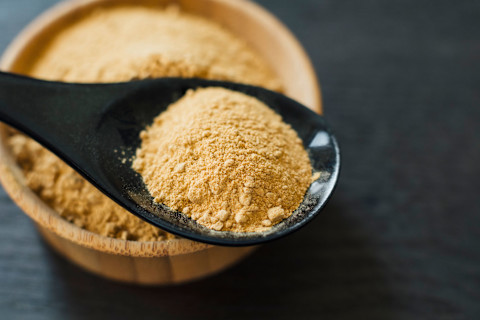
I'm one of those "cold people." I have a personal heater next to my desk. I wear sweaters when it's below 70 degrees F. I take the kind of showers that could boil a lobster (not that I would... poor lobsters!). Just writing about being cold makes me cold. So, while delicious superfood smoothies are the name of my breakfast game during the warmer months, they do present one problem for people like me: they’re cold. And in the winter, it’s all about the HEAT.
Jump over to the Puna area of the Peruvian Andes for a moment -- the indigenous region of the superfood maca -- and you won’t run into many cold smoothies there either. Largely barren and treeless, with intense sun, relentless fierce winds, and drastic temperature fluctuations that often drop below freezing temperatures at sunset, this is a landscape where nothing can grow … except for maca. In fact, not only does maca manage to battle the elements, it actually thrives in them.
Harvested primarily for its radish-like, nutrient-rich root, maca is what’s known as an adaptogenic food. Just as the maca plant adapts and adjusts to the hardships of its growing region, when ingested, it amazingly has a similar effect on the body – helping balance stress and maintain a state of biological equilibrium. Research shows maca’s adaptogenic compounds directly support the adrenal glands to help regulate hormones and enhance energy without being a stimulant. Maca is a true power food.
Though maca is frequently touted as a superfood smoothie staple, in Peru, maca’s earthy sweetness is traditionally enjoyed warm: often mixed into porridge, or boiled into a hot drink. I can attest, there’s something truly wonderful about a little maca powder mixed into some cozy oatmeal. But my favorite way enjoy maca is as a warm beverage -- hence the idea behind the creamy “Hot Maca” recipe from my book, Superfood Cuisine: Cooking with Nature’s Most Amazing Foods. Earthy, warming, nutty, and surprisingly delicious, this drink a great way to restore energy – try it in the place of coffee! Some days I’ll even skip this recipe altogether and simply heat up some water with a spoonful of maca powder for a more purist “strangely delicious” version (admittedly most people find the recipe below more palatable). Whatever way you make it, the instinctual good feeling of hot maca is something you must try to believe. Even if you’re not a cold person.
Hot Maca
Recipe reprinted with permission from Superfood Cuisine
Serves one
INGREDIENTS:
1 teaspoon maca powder
1 tablespoon maple syrup, or coconut palm sugar
1¼ cups homemade cashew milk, or store-bought unsweetened almond milk
DIRECTIONS:
Mix all the ingredients in a blender for just a moment to incorporate the maca powder thoroughly with the liquid. Pour into a small saucepan and heat over a low stove setting until mixture is warm and has just begun to become frothy. Serve in a mug and smile.
